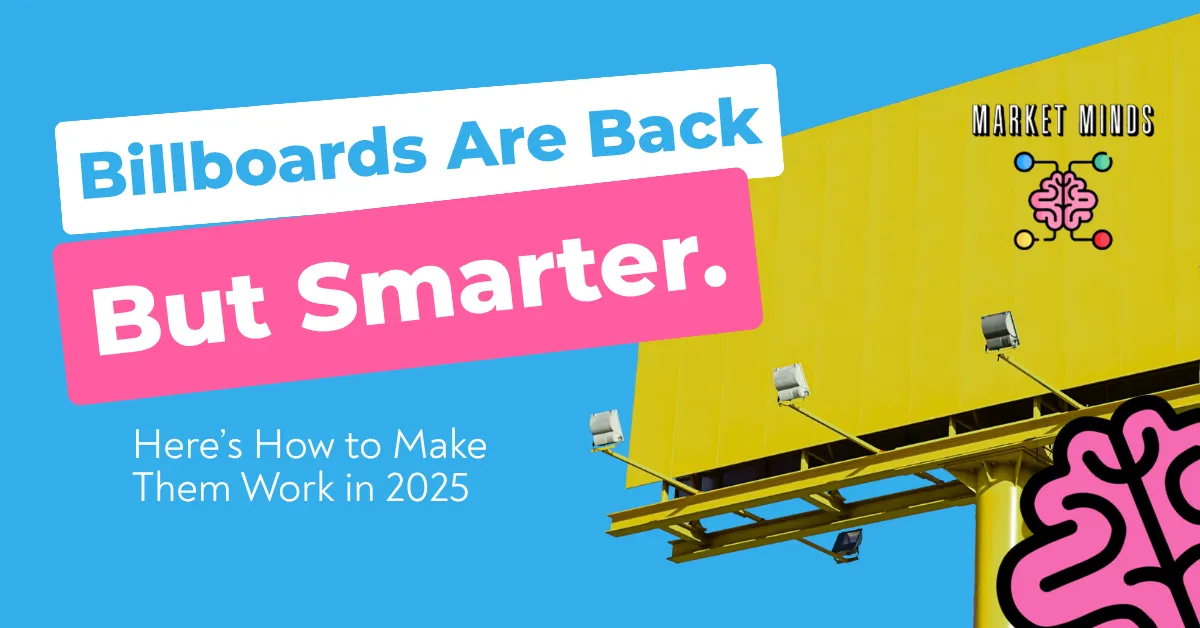
Billboards Are Back, But Smarter: Here's How to Make Them Work in 2025
For years, digital marketing has dominated the conversation, leading many B2C businesses to question the relevance of traditional advertising like billboards. But here's a surprising truth: billboards are making a comeback. Not the static, one-size-fits-all billboards of old, but smarter, data-driven versions that integrate seamlessly with your digital strategy. In 2025, a billboard isn't just about brand awareness; it's a powerful tool to drive measurable results.
So, how can B2C businesses leverage these revitalized giants to connect with consumers and boost revenue?
The Evolution of Out-of-Home (OOH) Advertising
Today's billboards are far from passive. Digital billboards offer dynamic content, allowing for real-time adjustments based on time of day, weather, or even local events. Beyond that, the real game-changer is the ability to link physical OOH exposure with digital engagement.
Making Billboards Smarter: Strategies for 2025
Integrate with Geofencing and Location-Based Marketing:
This is where "smarter" truly comes into play. By setting up geofencing around your billboard locations, you can target consumers who have been exposed to your ad. When they enter the geofenced area, they can receive mobile ads, special offers, or even reminders on their smartphones. This turns a passive viewing into an active digital interaction, bridging the gap between offline and online. Market Minds Creative specializes in these kinds of integrated paid advertising strategies.
Dynamic Content and Real-Time Optimization:
Leverage digital billboards to display rotating ads, special promotions, or even countdowns to events. Imagine a billboard advertising a coffee shop showing "Open Now!" during business hours, then switching to "Happy Hour 3-5 PM" later in the day. The ability to update content quickly makes your message more relevant and impactful.
Drive Traffic to Specific Digital Touchpoints:
Don't just show your brand; give viewers an immediate next step. Use clear, memorable calls to action (CTAs) that lead to a specific landing page, a unique QR code for an exclusive offer, or a simple, easy-to-remember URL. This allows you to track the effectiveness of your OOH campaign by monitoring web traffic or conversion rates from those specific sources.
Combine with Retargeting Campaigns:
For those who saw your billboard and perhaps visited your website but didn't convert, retargeting is key. Your OOH campaign serves as the initial touchpoint, building brand familiarity. When consumers later encounter your ads online, the recognition factor is higher, increasing the likelihood of conversion.
Utilize Data Analytics for Placement and Messaging:
Modern OOH planning uses demographic and traffic data to determine optimal billboard locations for reaching your target audience. Beyond placement, analyze which messages resonate most by testing different creatives on digital billboards and tracking corresponding online engagement.
Brand Storytelling and Consistency:
While smarter, billboards still excel at building brand presence. Use them to tell a concise brand story or reinforce your core message. Ensure consistency in branding, messaging, and visuals across your billboards and all other digital channels. This creates a cohesive and memorable brand experience.
In 2025, billboards are no longer just about shouting your message; they're about strategically whispering it to the right people, at the right time, and then following up digitally. By integrating OOH with advanced digital marketing tactics like geofencing, dynamic content, and retargeting, B2C businesses can unlock new levels of visibility and, most importantly, revenue.